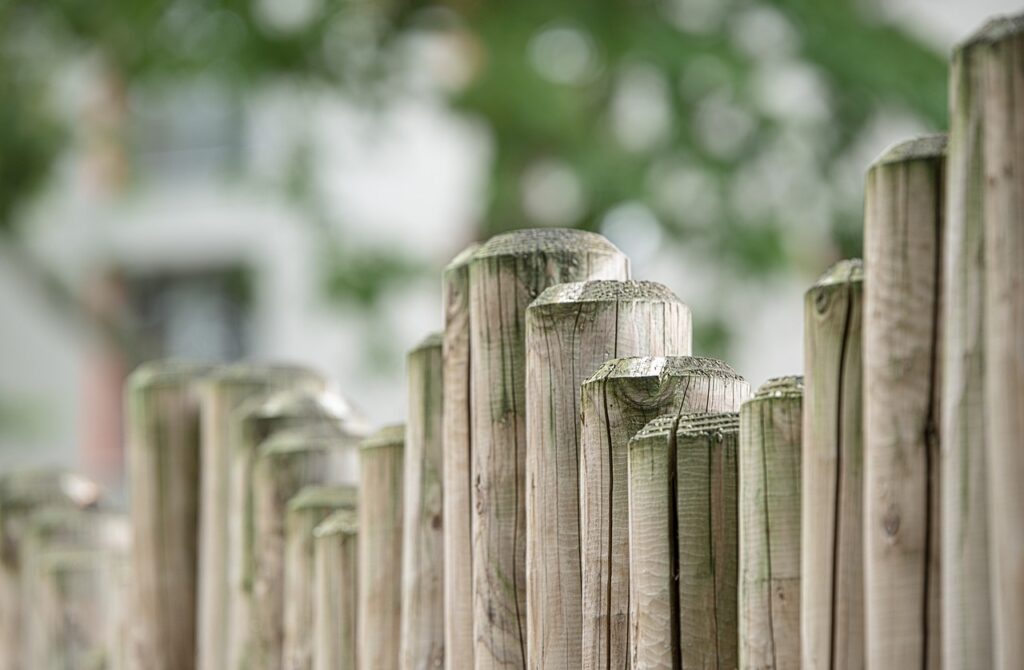Not all American homes have fences. Yet fences do far more than mark the boundaries of a property. They protect, define, divide, beautify, and even tell stories.
Fences have evolved into expressions of identity and intent. The face a fence shows to the world reflects its purpose and the people behind it. Understanding its many roles sheds light on how this simple structure continues to shape residential and commercial landscapes alike.
Historical Significance of Fencing
Fencing is one of the oldest man-made features in civilization. Early communities built barriers to keep livestock from wandering off and to prevent wild animals from entering settlements. These rudimentary enclosures laid the foundation for the organized, structured societies that followed. In ancient Rome, landowners demarcated property with walls that conveyed wealth and influence. In feudal Europe, fences signified not just territory but social hierarchy, with stone walls and hedgerows often used to protect noble estates.
Cultural and historical factors have always played a part in fence design. In Asia, bamboo fences were both functional and symbolic, often used in temples and gardens. In the American West, the advent of barbed wire transformed ranching by reducing the need for cowboys and allowing for more efficient cattle control. These early uses were practical, but they also carried the weight of tradition and identity. Fences started out as tools for survival but eventually became more than just barriers.
Functional Purposes in Modern Times
Today’s fences serve a wide range of practical needs. One of the most common reasons for installing a fence is to enhance security. A solid barrier can deter burglars, keep out unwanted visitors, and provide peace of mind for homeowners. Security fences often come in the form of tall wooden panels, chain link with added barbs, or even wrought iron with spear-like finials. In areas where safety is paramount, fences are often reinforced with cameras or motion sensors.
Privacy remains another key motivation. In dense suburban settings, people often seek solitude in their backyards. A tall fence with minimal gaps can offer a retreat from neighbors, traffic, and the general hustle of urban life. Some prefer stained cedar or redwood panels that age gracefully, while others opt for composite materials that mimic wood but require less maintenance.
Fences also act as containment. Families with pets or young children rely on secure enclosures to create a safe play area. Pool fencing is mandated in many places to prevent accidental drownings, and garden fencing keeps rabbits, deer, and other animals from destroying crops. In each of these cases, the fence serves a vital function that promotes safety and order.
Aesthetic and Architectural Appeal
Fences have become as much a part of a property’s visual identity as the home itself. The right design can enhance curb appeal, frame landscaping, and elevate an otherwise plain yard. Picket fences, for example, evoke a sense of nostalgia and charm, especially when paired with manicured gardens. These fences do not offer much in terms of security or privacy, but they lend a welcoming face to a property.
Wrought iron fences suggest elegance and sophistication. They are often used in front of historic homes, public parks, or cemeteries. The ornate details and robust structure make a statement that is both classic and enduring. In contrast, minimalist horizontal slat fences convey a modern and clean design aesthetic, often favored in urban or mid-century homes.
Material selection plays a large role in the visual impact of a fence. Wood offers warmth and tradition, but it also requires regular maintenance. Vinyl provides the same appearance with less upkeep, though it lacks the natural patina that some homeowners cherish. Metal fences are long-lasting but can feel cold or industrial if not softened with landscaping or creative paint choices.
Symbolic and Emotional Meaning
Fences often represent far more than their physical characteristics. In literature and art, they frequently symbolize separation, limitation, or boundary. A fence can suggest a division between public and private, between what is shared and what is withheld. In many communities, fences are seen as extensions of personal identity. The type of fence, how well it is maintained, and even its color can reflect values such as orderliness, hospitality, or privacy.
On the other hand, a fence can also serve as a gesture of inclusion. Low fences that allow for visibility invite neighbors to engage in conversation. Some people use their fences to display art, hang seasonal decorations, or post friendly signs, turning what could be a cold barrier into a platform for expression.
Conflicts have arisen in neighborhoods over fence height, color, and placement, indicating the strong feelings people attach to these structures. Disagreements often point to deeper issues about space, trust, and cooperation. A fence does not just mark the end of one property and the beginning of another. It also marks the line between coexistence and separation.
Environmental Impact and Sustainability
In an age where sustainability matters, the materials and construction of a fence carry environmental consequences. Wood fencing, while biodegradable, often involves the harvesting of trees and the use of chemical treatments to resist rot and insects. Responsibly sourced or reclaimed wood can help reduce environmental harm. Bamboo, a rapidly renewable resource, offers an alternative that combines sustainability with aesthetic appeal.
Vinyl fences, although long-lasting, are made from PVC, which can be challenging to recycle. However, many manufacturers now offer recyclable or partially recycled vinyl options. Metal fences, especially aluminum and steel, have high durability and can often be repurposed or melted down for future use. Choosing environmentally friendly paints and sealants also contributes to the ecological footprint of a fence.
Living fences, or hedgerows, provide the most natural solution. These green barriers improve air quality, offer habitats for birds and insects, and require little more than pruning once established. They also adapt well to local climates, making them a viable choice for those who prioritize sustainability and visual appeal.
Fences in Rural and Agricultural Settings
The needs of rural properties differ from those in urban and suburban areas. In the countryside, fences are vital for managing livestock and protecting crops. Traditional split-rail fences or barbed wire remain popular in ranching regions, offering cost-effective ways to control large areas. Electric fences are often used to contain animals like cattle or sheep without creating a visible obstruction.
Fences in agricultural settings also serve to mark property lines and deter trespassers. These installations may not focus on aesthetics, but they must be durable and weather-resistant. Many farmers combine fencing with gates that allow for vehicle access and movement of livestock, integrating practicality with the demands of modern agriculture.
In some regions, legal fencing codes require certain heights, spacing, or materials based on the type of animals being kept. These laws prevent disputes between landowners and help ensure that agricultural practices do not negatively affect neighboring lands.
Legal and Regulatory Considerations
Building a fence involves more than selecting materials and design. Local regulations often dictate fence height, setback from property lines, and permissible styles. Homeowners’ associations may impose even stricter rules to maintain neighborhood harmony. Before installation, property owners must check for easements, underground utilities, and shared boundaries.
Failure to adhere to these regulations can result in fines, forced removal, or legal disputes with neighbors. Surveys are often recommended before constructing a new fence to confirm boundary lines. In shared spaces such as townhomes or duplexes, mutual agreements are essential to avoid misunderstandings.
Permits may be required for taller fences, especially those exceeding six feet. Coastal areas, fire zones, or historic districts may carry additional restrictions that affect materials or appearance. Taking time to research and comply with these rules ensures a smooth process and long-term satisfaction.
Technology and Smart Fencing
Modern technology has found its way into the world of fences. Smart fencing systems now offer homeowners additional functionality. Sensors embedded into fences can alert property owners of attempted breaches, movement, or unauthorized entry. Cameras and lighting systems can be integrated into posts, creating an intelligent perimeter that goes beyond the passive role of traditional fencing.
In agricultural settings, GPS-based fencing allows for virtual boundaries where animals are guided using audio signals or mild electric stimuli. This eliminates the need for physical structures while still managing livestock effectively. These systems reduce material waste and make rotational grazing easier.
Even decorative lighting has advanced, with solar-powered fence caps and motion-activated lighting becoming common. These additions improve security while enhancing the visual appeal of the space. As smart home technology becomes more accessible, fencing will continue to evolve alongside it.
The Future of Fencing
The fence of the future will likely be a combination of sustainable materials, intelligent design, and multi-functional use. As property sizes shrink and urban density increases, fences will play a growing role in defining personal space without sacrificing aesthetics or connection. Designers are exploring modular fencing options that can change configuration, add seating, or incorporate vertical gardens.
In public spaces, flexible fencing systems are being tested for crowd control, traffic management, and emergency use. These fences are designed to be easily transported and rapidly deployed, making them useful for event planning and disaster response.
Innovation will also focus on personalization. As fabrication tools like 3D printing become more affordable, homeowners may create custom panels with patterns, messages, or artistic designs. The line between functional boundary and creative expression will blur, leading to fences that serve both head and heart.
Conclusion
The fence is more than a physical boundary. It represents safety, privacy, beauty, culture, history, and personal expression. From the humble wooden picket to the sophisticated smart fence, this structure continues to evolve with our needs and values. Understanding the many faces of a fence allows us to appreciate the complexity behind its simple appearance. Whether used to protect, enhance, or inspire, a fence remains a quiet but powerful presence in the built environment. It frames not just our homes, but also the lives and stories that unfold within them.

